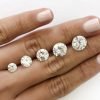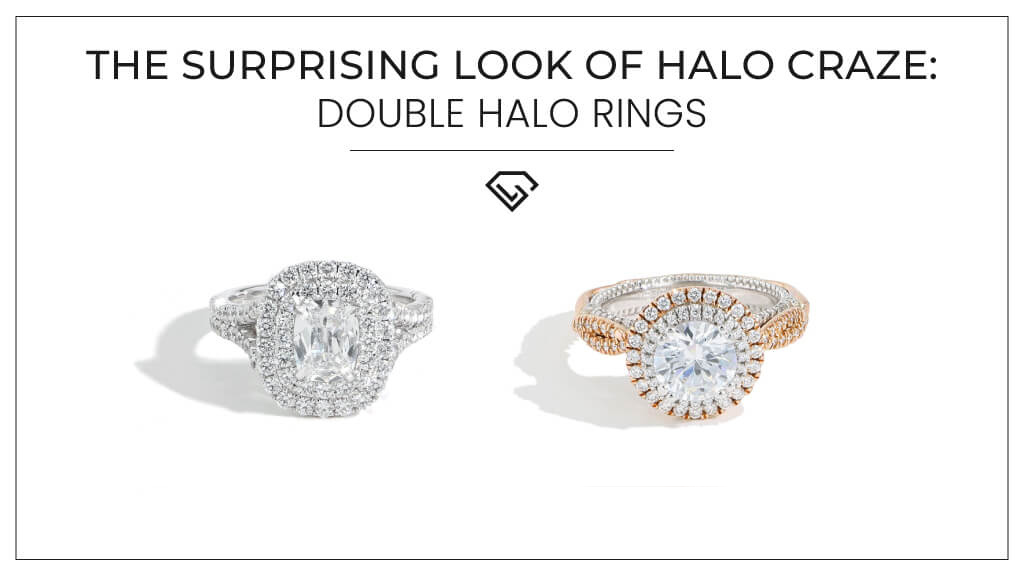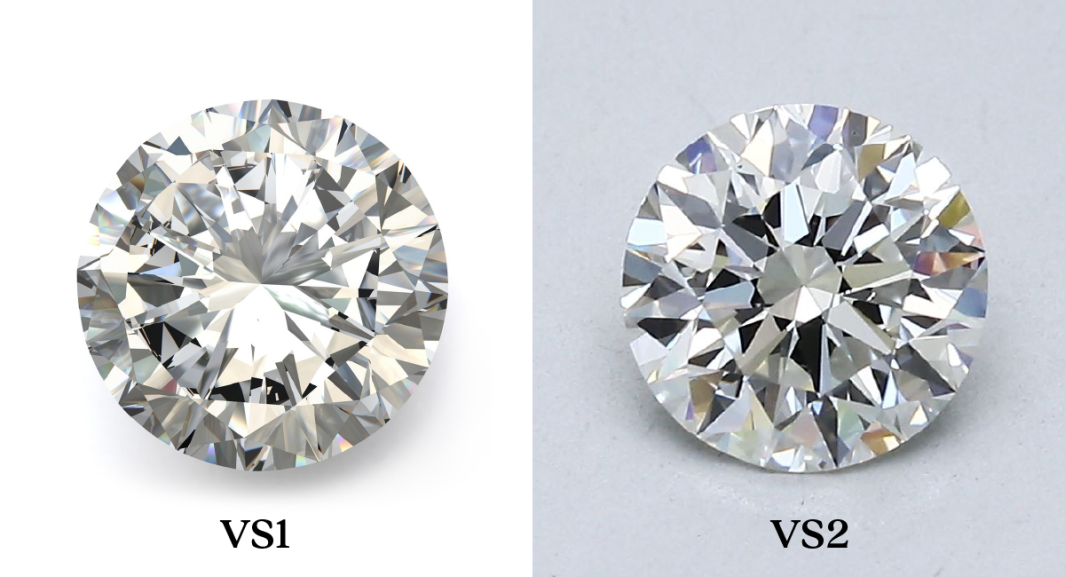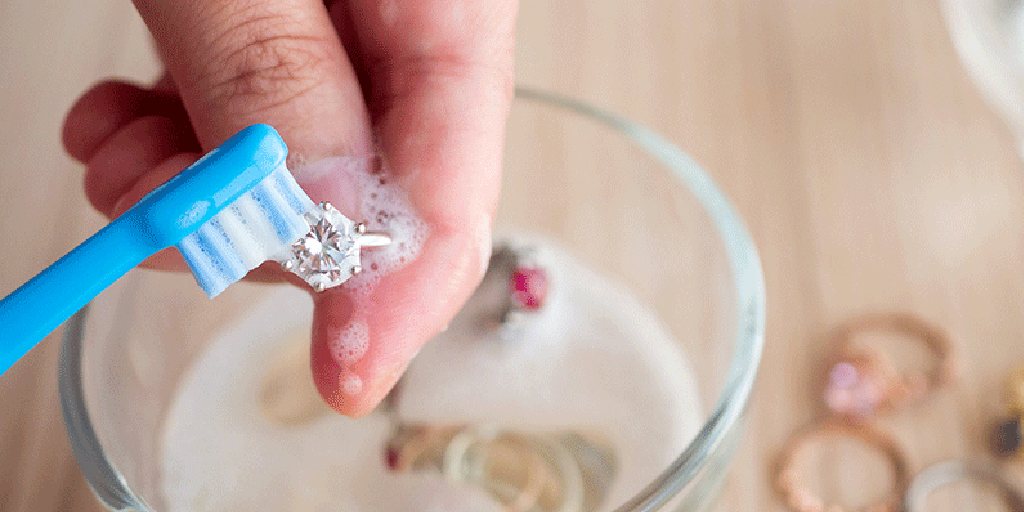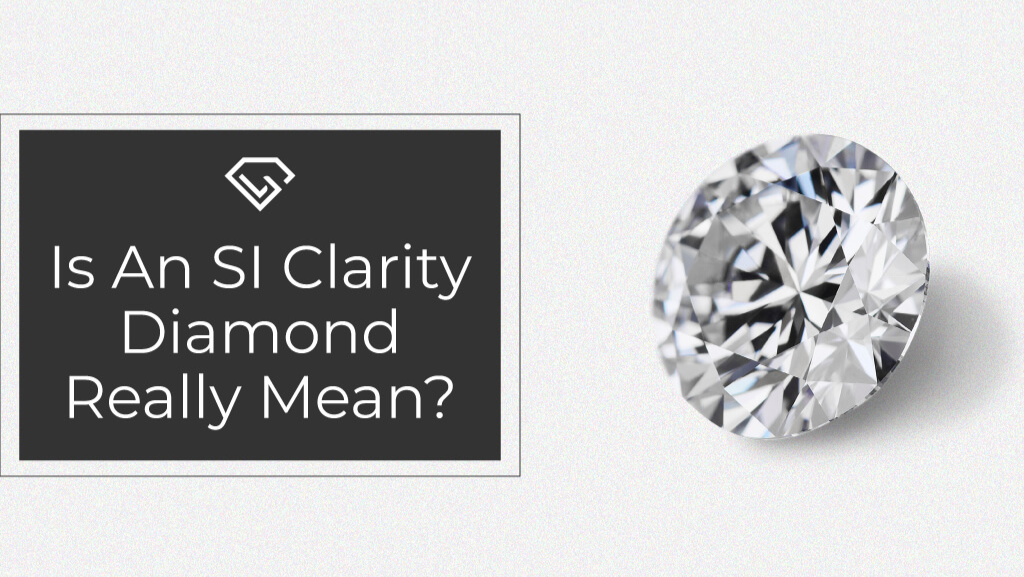Everything About VS Diamond vs VVS Diamond You Can’t Afford to Miss
In the public eye, diamonds are forever, but this belief often lacks the finicky caution required to tell apart those diamonds that are a cut above the rest. Outwardly, diamonds are just pure carbon turned to a transparent crystalline form, but the quality of these gems can differ widely when the level set by the (Gemological Institute of America) through the 4Cs of clarity, cut, color, and carat weight is taken into consideration.
Uniting these factors, however subtle, has the power to significantly sway the worth of lab diamonds, particularly when comparing gems of equal size.
What are VVS Diamond and VS Diamond?
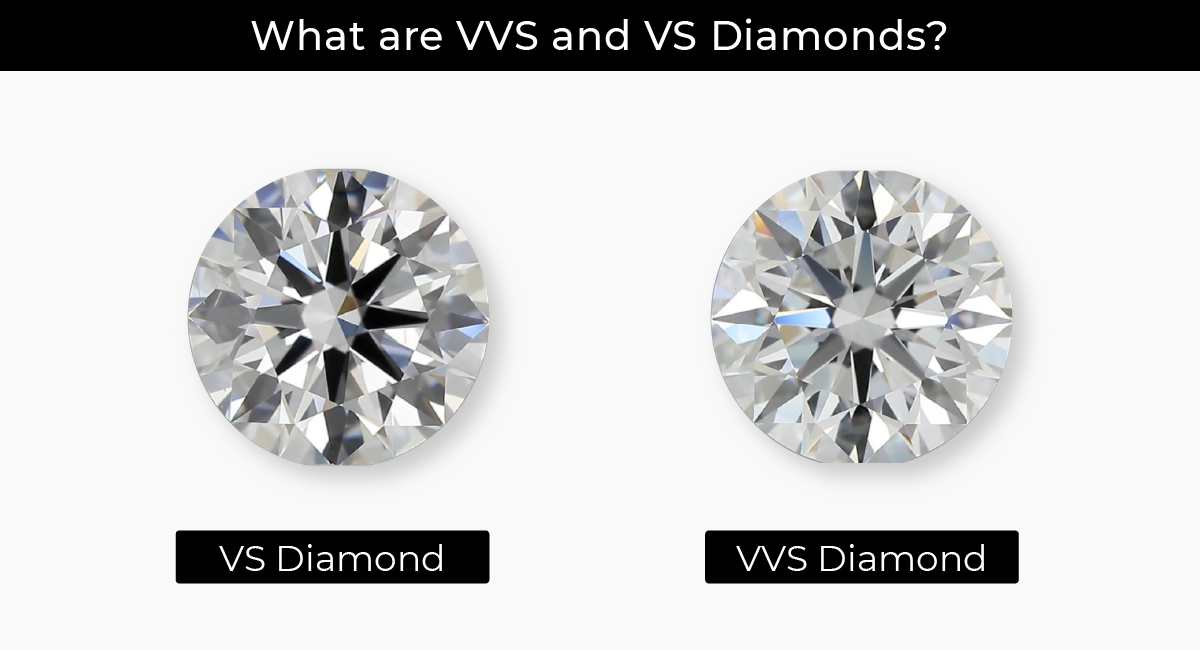
At the outset, a little background on how diamonds are created and how that, in turn, affects the clarity of the stone is important. Real or natural diamonds are created deep within the earth when carbon is compressed under immense heat and pressure.
During this process, diamonds inherit certain features that may be internal, known as ‘inclusions’, and external, meaning ‘blemishes’. Inclusions are confined to the interiors of a diamond and develop when small crystals get trapped in a diamond during its formation, affecting the gem’s appearance from within. On the contrary, blemishes turn up on the surface of the diamond through abrasions, polish lines, etc.
Ascertaining the clarity of a diamond, especially with respect to the VVS and VS grades, requires a meticulous approach towards recognizing the size, position, number, relief, and nature of these features as well as the effect it has on the overall appearance of the lab diamond.
As a thumb rule, it must be remembered that no diamond is absolutely pure, however the higher its clarity, the closer it comes to purity and the more expensive its price. Such consequences make it impertinent to evaluate the clarity of a diamond with the help of a predetermined grading system before deciding to make a purchase.
What is VVS Diamond?
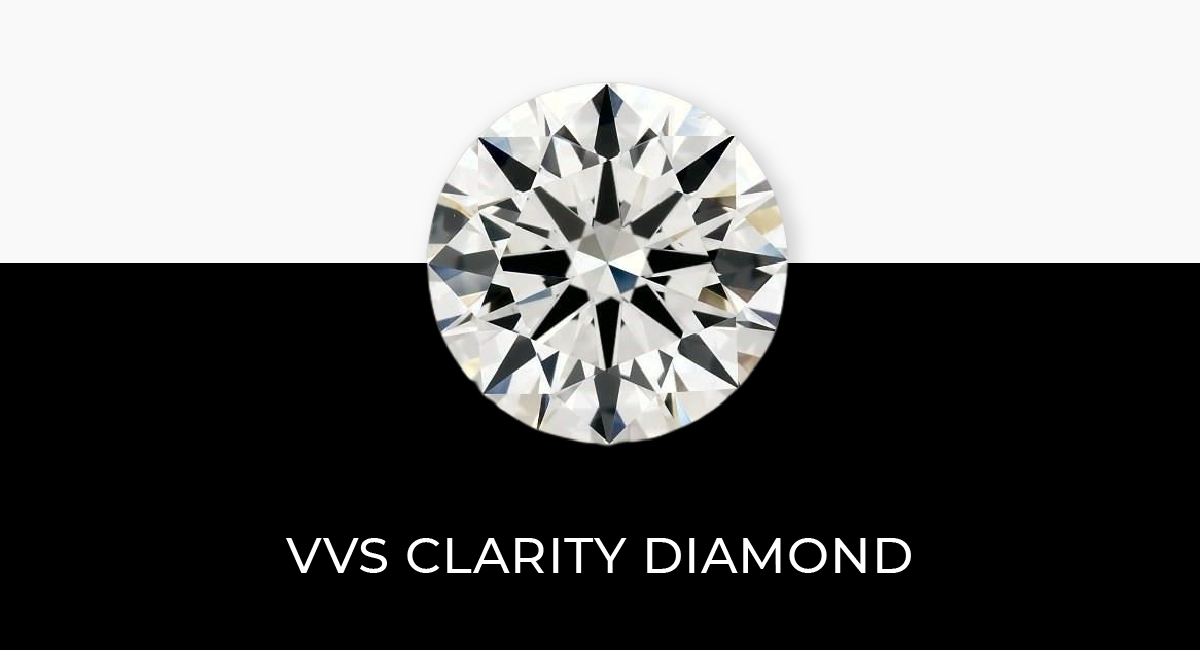
The inclusions in a VVS diamond are so tiny that they become difficult to view by the naked eye and can only be detected with the help of a microscope. For this reason, VVS diamonds are known to be eye-clean. Common inclusions, that can either be extremely difficult (VVS1) or fairly difficult (VVS2) to find, can include the following:
- Cloud pinpoints, needles or internal graining are unnoticeable from the table of the diamond but can be spotted through the pavilion, or the commonly found “V” shape at the base of the diamond. These inclusions are extremely difficult to find face-up, or from the top facet of the diamond, at 10x magnification (VVS1).
- Clouds pinpoints, needles, or internal graining that are fairly difficult to spot face-up at 10x magnification (VVS2). The difference between these two subcategories remains virtually insignificant.
- Negligible inclusions that reach the surface from within in the form of a chip, bruise, feather, abrasion, indented nature, bearding, etc. These can show up in both subcategories.
It is important to note that any diamonds with inclusions visible to the naked eye cannot be granted the clarity grade of VVS1 and VVS2. You will notice that even though VVS diamonds do not look any different from Flawless or Internally Flawless.
What is a VS Diamond?
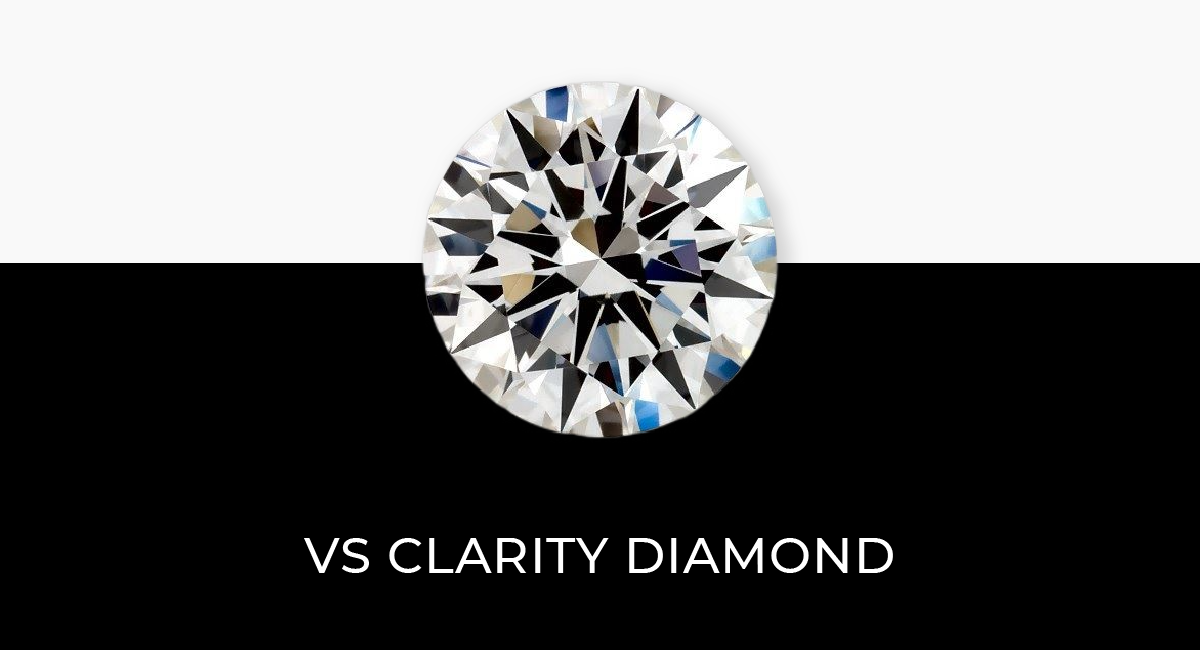
A VS diamond has minute inclusions that vary from very difficult (VS1) and somewhat easy (VS2) to find with 10x magnification. No matter what the features of the inclusions are, their size must be relatively small to that of the lab diamond.
The VS designation refers to Very Small inclusions in a diamond. These inclusions can vary from crystals, clouds, knots, or small abrasions reaching the surface like feathers or cavities. Despite not being Flawless, inclusions are rarely noticeable under bright light or even magnification (VS1). In rare circumstances, a large enough VS stone may have inclusions that were visible to the naked eye in bright light (VS2), but they are usually eye-clean.
We would suggest you explore VS diamonds as they can be a great and adjustable alternative that might suit your budget and requirements better than VVS clarity diamonds.
Also Read: The Different Cuts of Diamonds: A Guide to Choosing the Best One in 2022
GIA and its Diamond Clarity Scale

In devising its clarity grading scale, the GIA uses 10x magnification as a standard measure for each grade. It takes a jeweler’s skilled eye and microscope with increased magnification of 10x loupe to determine the clarity grade of a diamond. During this process, the grader must keep five factors in mind:
- Size: With all factors being otherwise equal, the relative size of the inclusion or blemish in comparison to the size of the diamond, meaning if the same is easily visible, the clarity grade allotted will be lower.
- Number: With all factors being otherwise equal, the number of inclusions or blemishes visible at 10x magnification will have a positive relationship with the clarity grade.
- Location: The closer the inclusion or blemish is to the table of the diamond or the facet that is visible when the stone is viewed face-up, the lower the clarity grade.
- Nature: This refers to the overall effect the blemish or inclusion has on the appearance of the diamond, something that only the grader can ascertain.
- Color: In some cases, the color of the inclusions can affect the overall appearance of the diamond. Dark-colored inclusions, like black carbon spots, maybe more noticeable and potentially impact the clarity grade.
It’s important to note that each factor is evaluated in conjunction with the others, and the overall assessment leads to the assignment of a specific clarity grade on the GIA Diamond Clarity Scale.
| Shape | Carat | Cut | Color | Clarity | Price | |
| 2.17 | Ideal | H | SI1 | $794 $611 | View | |
| 1.41 | Ideal | I | SI1 | $1441 $1372 | View | |
| 1.70 | Ideal | G | SI1 | $397 $378 | View | |
| 2.51 | Ideal | H | SI1 | $519 $494 | View | |
| 2.51 | Ideal | H | SI1 | $519 $494 | View | |
| 1.80 | Excellent | E | VS2 | $477 $454 | View | |
| 1.79 | Excellent | F | SI1 | $628 $483 | View | |
| 1.50 | Excellent | E | VS2 | $875 $744 | View | |
| 1.54 | Ideal | I | VS2 | $951 $713 | View | |
| 1.72 | Ideal | G | SI2 | $701 $526 | View | |
| 1.79 | Ideal | G | SI2 | $728 $546 | View | |
| 1.62 | Excellent | F | SI1 | $713 $535 | View | |
| 1.60 | Ideal | E | SI1 | $724 $543 | View | |
| 1.30 | Excellent | H | VS2 | $25296 $18972 | View | |
| 2.00 | Very Good | F | SI1 | $1032 $774 | View | |
| 1.52 | Ideal | E | SI2 | $583 $437 | View | |
| 1.48 | Ideal | H | VS2 | $9652 $7239 | View | |
| 1.62 | Ideal | I | SI1 | $657 $493 | View | |
| 1.74 | Ideal | J | I1 | $664 $498 | View | |
| 2.00 | Ideal | K | I1 | $5064 $3798 | View |
Diamond Clarity Grading
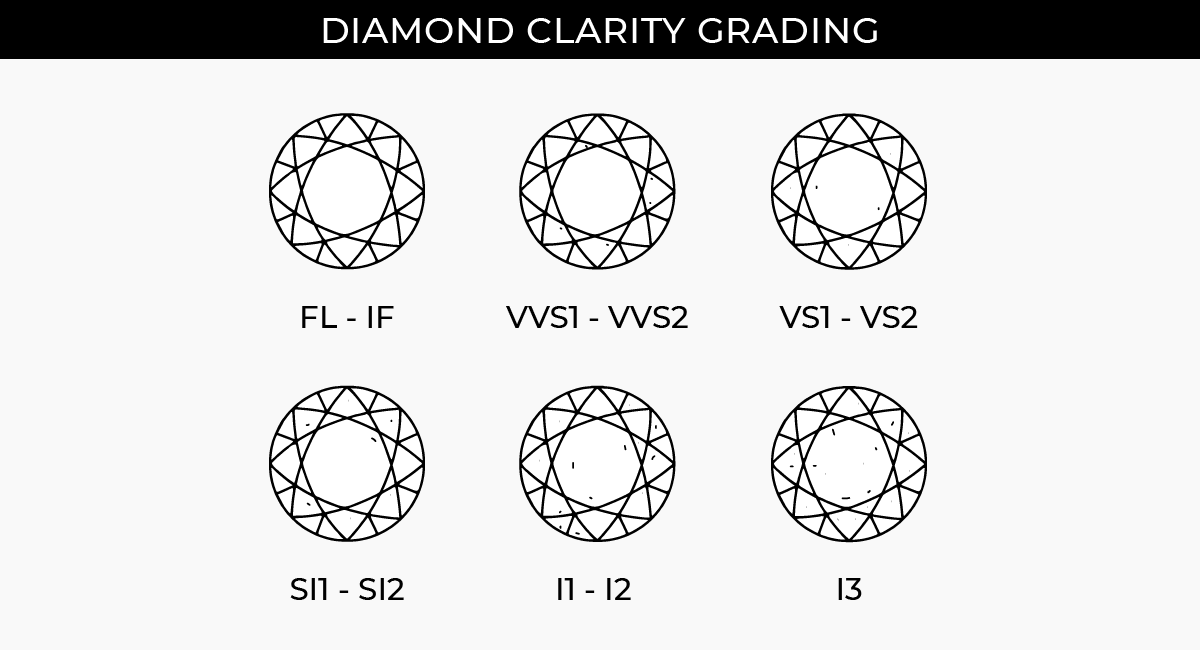
Founded on these five clarity characteristics, the GIA grading scale for diamond clarity can be divided into 6 main categories, ranked according to their descending price value, as follows:
Flawless (FL) |
No inclusions or blemishes upon examination under 10x magnification. |
Internally Flawless (IF) |
Under 10x magnification, no inclusions are detectable. |
Very Very Slightly Included (VVS1 and VVS2) |
Such negligible or undetectable inclusions that vary from extremely difficult (VVS1) and very difficult (VVS2) to detect that even a skilled grader will find it difficult to find them under 10x magnification. VVS1 denotes slightly higher clarity than VVS2. |
Very Slightly Included (VS1 and VS2) |
With considerable effort, the inclusions can be discovered either with considerable effort (VS1 ) or easily (VS2), however, they still remain minor in nature. |
Slightly Included (SI1 and SI2) |
Inclusions that are easily discoverable (SI1) or apparent in nature (SI2) under 10x magnification. |
Included (I1 clarity, I2, and I3) |
Inclusions are so apparent that they are not only evident under 10x magnification but also affect the brilliance and transparency. |
Each diamond is individually assessed and assigned a clarity grade based on the GIA Diamond Clarity Scale.
The GIA Clarity Scale provided uniformity in diamond evaluation for jewelers across the globe, hence, these grades have become a common measure despite the nationality of the jeweler. Since blemishes only affect the top two categories, it is only about inclusions that we will continue the discussion on VVS and VS diamonds.
Difference between VVS Diamonds and VS Diamonds
While it is obvious that VVS diamonds are rank superior to VS diamonds, outlining the exact point of difference before deciding to purchase either is extremely important. Before all else, let’s understand the typical inclusions that may be found in both the diamonds-
- Pinpoints– A tiny inclusion in the form of a crystal trapped inside the diamond that is noticeable under 10x magnification.
- Clouds– Groups of minute inclusions that cannot be spotted individually but can make the appearance of a diamond hazy.
- Internal Graining– Lines, angles, or curves during the process of crystal growth in the formation of a diamond.
- Needles– These are elongated crystals that appear as thin, needle-like inclusions.
- Knots– Knots are external crystal growth that has extended into the diamond.
Here’s a comparison table highlighting the differences between VVS (Very Very Slightly Included) diamonds and VS (Very Slightly Included) diamonds:
It is with reference to these inclusions that we differentiate between VVS and VS diamonds as follows-
Parameters |
VVS Diamonds |
VS Diamonds |
Definition |
VVS diamonds have very few and very small inclusions |
VS diamonds have minor inclusions that are noticeable under 10x magnification |
Clarity Grade |
VVS1 and VVS2 |
VS1 and VS2 |
Brilliance |
VVS diamonds tend to have exceptional brilliance and sparkle due to their high clarity |
VS diamonds also have good brilliance and sparkle, but it may be slightly lower compared to VVS diamonds |
Inclusion Visibility |
Inclusions are extremely difficult to see with the naked eye |
Inclusions are relatively easy to see under magnification but may be barely visible to the naked eye |
Inclusion Size |
Inclusions are usually very tiny and microscopic |
Inclusions are slightly larger than VVS diamonds but still small and not easily noticeable |
Eye-cleanliness |
VVS diamonds are considered eye-clean, meaning they appear flawless to the naked eye |
VS diamonds are often eye-clean, but some inclusions may be visible to a keen observer without magnification |
Price Range |
VVS diamonds are more expensive, with prices typically higher compared to VS diamonds |
VS diamonds are relatively more affordable compared to VVS diamonds |
Setting Options |
VVS diamonds offer more flexibility in terms of setting options due to their smaller and less visible inclusions |
VS diamonds also provide a wide range of setting options, but certain designs may need to consider the placement of inclusions |
Investment potential |
VVS diamonds, especially larger sizes with exceptional clarity, have high investment potential |
VS diamonds can also hold investment value, particularly if they possess other desirable attributes like exceptional cut or color |
Certification |
VVS diamonds are certified by gemological laboratories to ensure accuracy and guarantee the quality |
VS diamonds also come with certifications, providing assurance of their authenticity and characteristics |
Despite the numerous differences, both these clarity grades will defeat the observation of a naked eye. In addition to this, they also share one characteristic of having flaws that are closer to the periphery of the stone, meaning they will look more or less the same from face-up. The choice between VVS and VS diamonds often depends on personal preferences, budget considerations, and the specific characteristics of the individual diamond being evaluated.
What to Choose: VVS Diamonds or VS Diamonds?
Since buying diamonds is inherently an expensive affair, it is well reasoned to be money-conscious while deciding what to purchase. The key question to ask here is- Will a higher clarity grade prove worth of the expense? There are two ways to go about it, both resting on personal preference.
On one hand, the flaws of a VS diamond will not be evident to the naked eye and, on the other hand, VVS diamonds represent a more unique, closer to perfect, stone. A choice between convenience and rarity will always dominate the decision to purchase either, where the former may weigh lighter on the pocket but the latter can symbolize the purity of a big romance.
There are also other factors at play here, where a selection may be made solely on the basis of the cut and shape of a diamond. Usually, rectangular cuts, heart shapes, emeralds, round brilliant, asscher cut, princess cut, and marquise suit higher clarity grades the best, making a purchase of VS diamonds in these cuts more desirable.
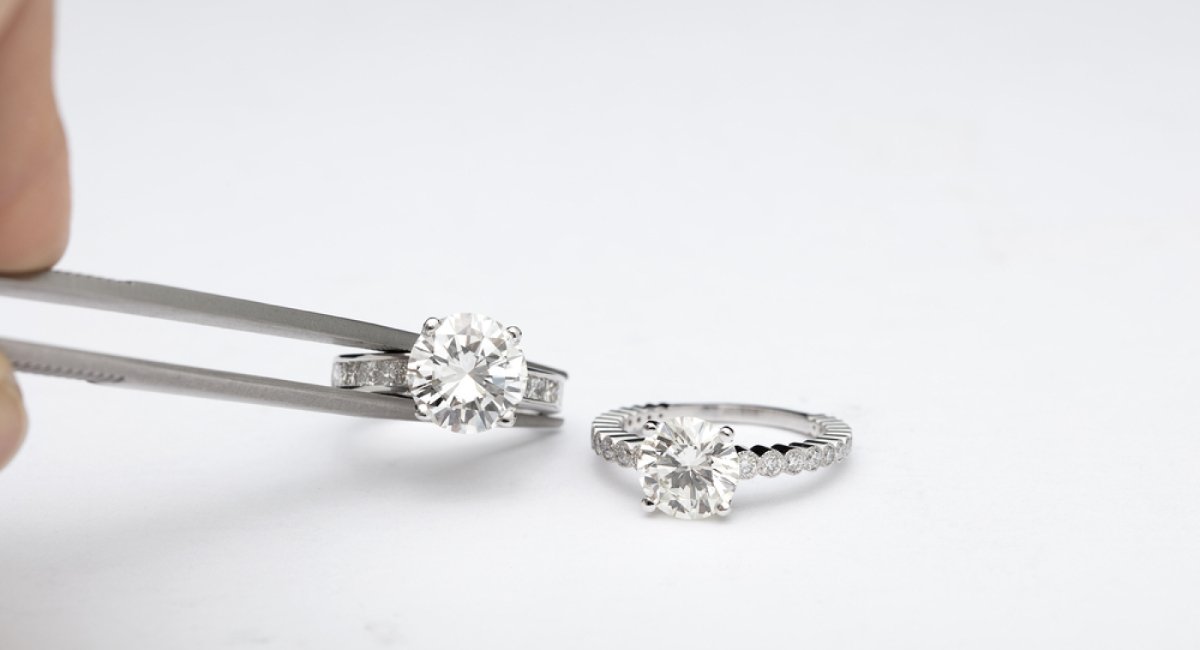
It must be kept in mind that clarity cannot be the sole determinant for any selection, and multiple choices have to be made with respect to the cut, carat weight, and color that make diamonds so dynamic.
For instance, it is better to buy a VS diamond for engagement rings, where the size and clarity of the diamond are customarily mutually exclusive since one might get a bigger diamond of better color and cut for a lower price. You can check the diamond size with our diamond size chart.
Where to Buy VS or VVS Diamonds?
You can get your hands on the VVS and VS diamonds at the best price at Loose Grown Diamonds. A diamond wholesaler who cuts out the middleman and sells directly to you. Elevate your lab grown diamond purchase with our exclusive promo code for added savings.
We will guide you all the way to help you purchase the best quality VVS diamond within your budget. Additionally, if you are confused about determining the price of your selected diamond, you can use our Diamond Value Calculator.
Conclusion
The difference between VVS and VS diamonds will always be obvious only to a handful of people with the required expertise. To an average consumer, choosing the “best” diamond has to be a choice made pragmatically as the difference will mostly go unnoticed by the naked eye.
In such circumstances, it is always better to pay attention to the budgetary restraint every consumer exercises on themselves and focus on buying an eye-clean diamond. Buying a diamond of a higher clarity grade will not always prove to be a smart purchase or a better investment, instead, it is more prudent and profitable to buy diamonds of lower clarity grade that are clean to the naked eye.
In the end, one must go back to the original saying that all diamonds will last forever no matter what the grade.
FAQ
Which is better VS or VVS diamond?
VVS diamonds are considered higher in clarity and generally more desirable than VS diamonds.
How much is a vvs diamond?
The price range of a VVS diamond starts from almost $149 to hundreds of dollars. The price of a VVS diamond can vary significantly based on factors such as carat weight, cut, color, and other quality characteristics.
How do you tell if you have VVS diamonds?
To determine if you have a VVS diamond, a professional gemologist would examine the diamond under magnification to assess the presence of very minute inclusions that are difficult to see even at 10x magnification.

